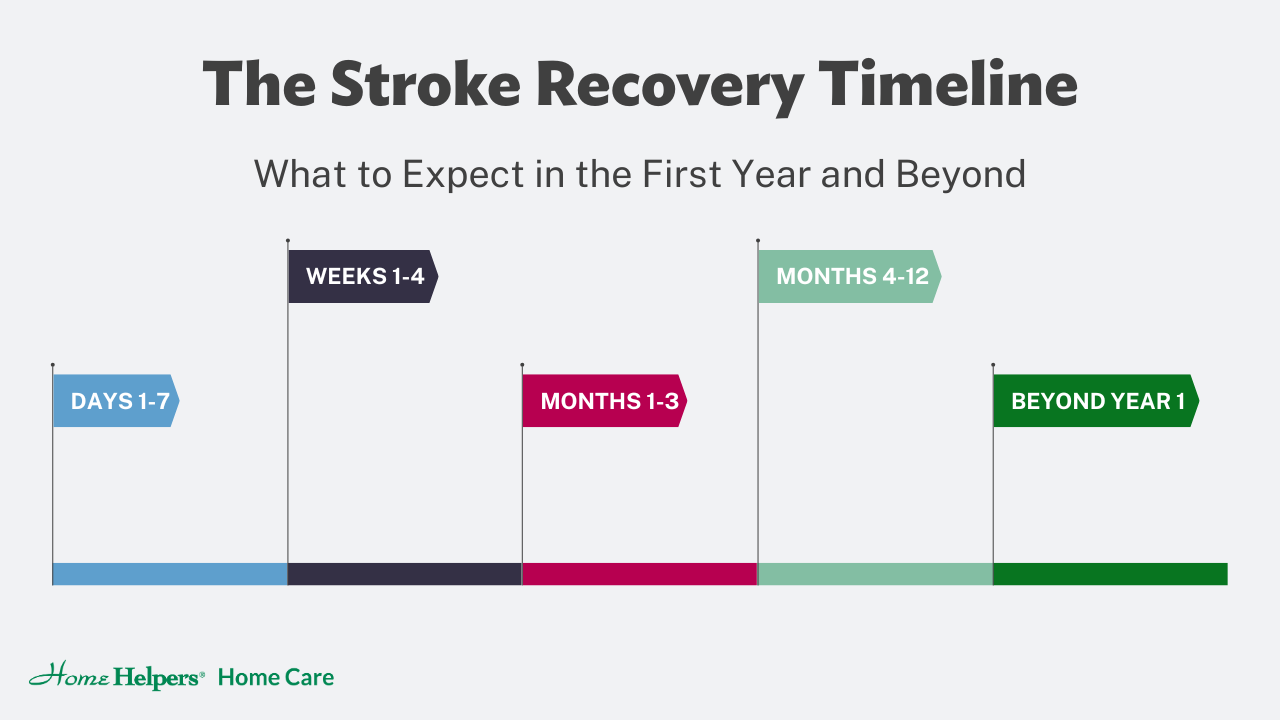The Stroke Recovery Timeline: What to Expect in the First Year and Beyond

Author: Home Helpers Martinsburg
Recovering from a stroke is a deeply personal and often unpredictable journey. No two experiences are exactly the same, but having a general timeline and understanding of what to expect in the months following a stroke can help families in Martinsburg and the Eastern Panhandle plan effectively, offer meaningful support, and know when to bring in professional care.
The First Few Days: Hospital Stabilization and Early Assessments
Immediately after a stroke, the priority is medical stabilization. Most patients are treated in a hospital or stroke unit, where doctors work to minimize brain damage, manage blood pressure, and prevent further strokes. During this time, a team of specialists—neurologists, speech therapists, occupational therapists, and physical therapists—begin early assessments to evaluate the extent of impairment.
According to the American Stroke Association (2024), early rehabilitation should begin within 24 to 48 hours post-stroke, when medically appropriate, to improve long-term outcomes.
🔗 American Stroke Association - What to Expect After a Stroke
Weeks 1–4: Transitioning Home or to Rehab
After hospitalization, many stroke survivors move to an inpatient rehabilitation facility, skilled nursing facility, or return home with in-home care and outpatient rehab. This phase typically focuses on:
- Restoring mobility and physical strength
- Improving speech, language, and swallowing
- Practicing basic activities of daily living (ADLs)
Patients and families should expect intensive therapy multiple times per week. Support from trained home care professionals can help bridge the gap between clinical care and daily living needs.
🔗 National Institute of Neurological Disorders and Stroke - Stroke Rehabilitation
Months 1–3: Rapid Progress and Emotional Adjustment
The first three months after a stroke often bring the most noticeable gains in function. This is the “golden window” when the brain is most responsive to rehabilitation. However, it’s also when many survivors begin to feel the emotional weight of their condition.
Common challenges during this phase include:
- Post-stroke fatigue
- Mood changes, including depression or anxiety
- Frustration over physical or cognitive limitations
Family caregivers may also begin to feel overwhelmed. Respite care or consistent in-home support can offer both practical help and emotional relief.
🔗 Mayo Clinic - Stroke Recovery: Steps You Can Take
Months 4–12: Slower Progress, Focus on Long-Term Independence
After the initial few months, recovery continues—but often at a slower pace. Many stroke survivors reach a plateau around six months, though therapy can still provide measurable improvements beyond this point.
Goals at this stage may include:
- Regaining independence in daily activities
- Driving evaluations or adaptive transportation
- Ongoing speech and occupational therapy
- Modifying the home for long-term safety
Families may begin considering long-term care plans, especially if mobility or memory issues persist.
🔗 Johns Hopkins Medicine - Life After Stroke
Beyond One Year: Recovery Doesn’t Stop
Contrary to popular belief, stroke recovery doesn’t end after a year. The brain continues to adapt, and with consistent support, individuals can regain more function, improve quality of life, and find new routines that work for them.
Survivors often benefit from:
- Long-term home care assistance
- Adaptive devices and home safety modifications
- Mental health support for both survivor and caregiver
- Social and community engagement
🔗 Centers for Disease Control and Prevention - Stroke Survivors
How Home Helpers Home Care Can Support Stroke Recovery
At Home Helpers Home Care, we understand the full spectrum of stroke recovery—from hospital discharge to long-term support. Our experienced caregivers can provide:
- Assistance with personal care, mobility, and hygiene
- Support with exercises and therapy routines
- Medication reminders and meal preparation
- Companionship to reduce isolation and promote mental well-being
We tailor our care plans to match your loved one’s unique needs at every stage of their recovery.
Stroke Recovery Help Is a Phone Call Away
If your loved one in Martinsburg is recovering from a stroke, you don’t have to navigate it alone. Call Home Helpers Home Care of Martinsburg at 304-433-8000 to schedule a free assessment. Our compassionate care team is ready to support your family every step of the way.
References
American Stroke Association. (2024). What to Expect After a Stroke. Retrieved from https://www.stroke.org/en/about-stroke/effects-of-stroke/what-to-expect-after-a-stroke
Centers for Disease Control and Prevention. (2023). Stroke Survivors. Retrieved from https://www.cdc.gov/stroke/survivors/index.htm
Johns Hopkins Medicine. (2023). Life After Stroke. Retrieved from https://www.hopkinsmedicine.org/health/conditions-and-diseases/stroke/life-after-stroke
Mayo Clinic. (2023). Stroke Recovery: Steps You Can Take. Retrieved from https://www.mayoclinic.org/diseases-conditions/stroke/in-depth/stroke-recovery/art-20045172
National Institute of Neurological Disorders and Stroke. (2023). Stroke Rehabilitation. Retrieved from https://www.ninds.nih.gov/health-information/disorders/stroke/stroke-rehabilitation
